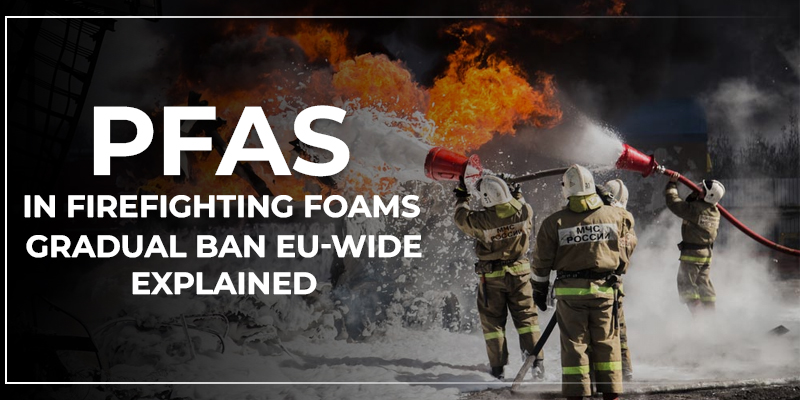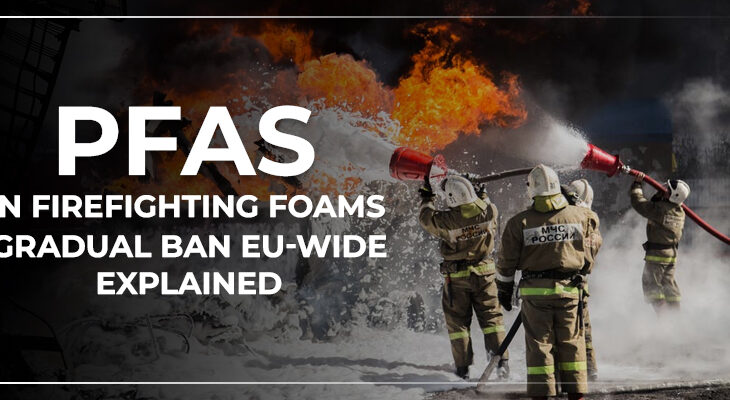
One of the major chemical components in firefighting foam is the Per- and Poly-Fluoroalkyl Substances (PFAS), which are known for their effective extinguishing property. This chemical plays a critical role in extinguishing flammable liquid fires. However, the primary concern regarding PFAS is its persistence, toxins, and potential environmental impact that it could make when it comes in contact with living things. Moreover, the possible impacts of the PFAS are highlighted in the European Union (EU) to take decisive action. Hence, this blog narrates the recent happenings and updates on PFAS, which was recently promoted in the European Union.
Gradual Ban On PFAS:
In a landmark move, the EU has initiated a gradual ban on PFAS-containing firefighting foams, signaling a significant step towards protecting human health and the environment. The Socio-Economic Analysis (SEAC) committee in ECHA recently accepted the opinion for the ban of PFAS in firefighting foams. The primary aim of the approval is to reduce the PFAS emission in human beings and the environment.
SEAC considers the proposal for the restriction of PFAS in the firefighting foams as appropriate and valuable because, due to this, there could be a reduction in the emission of PFAS by 13,200 tonnes over 30 years into the environment. Moreover, the approval for the gradual reduction of PFAS in the firefighting foam was also based on the opinion adopted by the ECHA Committee for Risk Assessment (RAC).
How About Alternatives?
SEAC, in the approval, also stated that there would be a complete review of the sites that manufacture, create, and store harmful substances with fluorine-free alternative substances within a ten-year transition period. In addition, SEAC also suggests a review of the offshore gas and oil industry, where fires significantly impact humans and the environment.
Also, SEAC intends to increase the transition periods from 3-5 years in civil shipping. SEAC also recommends placing fire extinguishers with fluorine-free substances so that there is technical support during emergencies and an alternative available before the transition period ends.
What Is The Next Step By SEAC?
As SEAC has adopted the opinion, ECHA proceeds to compile the joint decision of the committees for public release and submits it to the European Commission with the restriction proposal.
Subsequently, the European Commission will assess whether a proposed restriction is warranted. If deemed necessary, it will present a proposal to modify the list of restrictions (Annex XVII of the REACH Regulation). This proposal will be subject to a vote by the EU Member States in the REACH Committee and undergo scrutiny by the European Parliament and Council before being officially enacted as law.
The EU’s gradual ban on PFAS-containing firefighting foams represents a landmark move towards prioritizing public health and environmental safety. By taking decisive action on these harmful substances, the EU sets a precedent for responsible chemical management, encouraging innovation in firefighting technologies and fostering global cooperation.
Sunstream provides you with prompt REACH & conflict mineral compliance services. Get in touch with us today.




 +1.585.935.7123
+1.585.935.7123 +91-804-148-6861
+91-804-148-6861